Adjustable do-it-yourself monitor backlight
Hello everyone, I am Alexander, and I am a freelancer.
Freelance as the main type of work I have been doing for almost 7 months. For some reason (magistracy, bicycle, laziness, etc.) I often work in the evening.
But the trouble is, the lighting in the room is weak, and the brightness of the monitor in the evening just disappears. I put up with it for a long time. And then, suddenly, during the next evening watching the masterpiece of the film industry on your Philips TV, with the remarkable Ambilight technology, an idea comes to me - why not make a similar white backlight for the monitor?
')
No sooner said than done! Result of work:

Who are interested in the stages of construction - I ask for habrakat.
Immediately decided to feed it all from a computer power supply, because backlight is needed only while working on it. Soon the LED tape was ordered in the well-known Chinese online store Aliexpress. After a long 3 weeks of waiting, I have it.
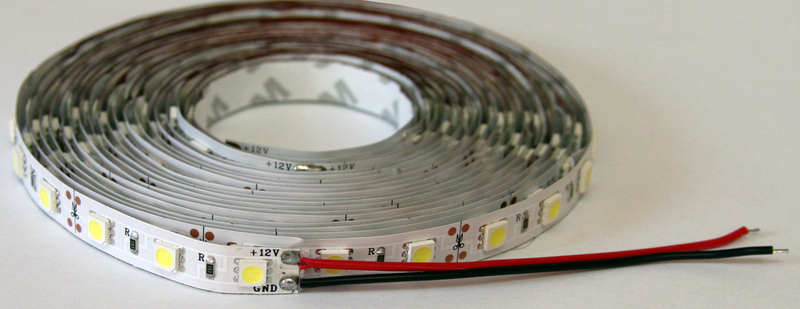
I regretted that I had ordered from an unverified seller, who instead of the tape on a reel in an antistatic package packed this tape without a reel into a simple bag, and into an envelope made from a pinch. The benefit of the tape is almost not damaged (because of the bend, 1 LED has fallen off, which was successfully soldered back). The seller in the black list, definitely.
We check the performance of the tape, measure the monitor (3 times) and cut. It is necessary to cut according to such special marks.

As a result, should get this:
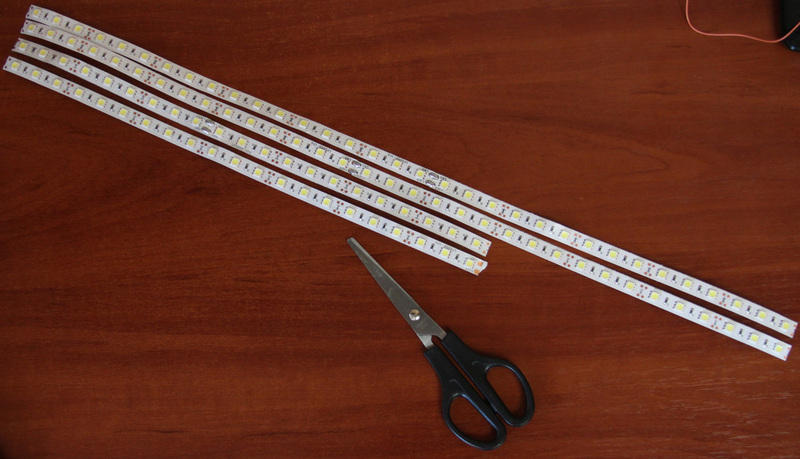
Next, you need to solder all four pieces into one. I soldered wires about ~ 2 cm in length, for safe bending to a 90 degree angle.
The next step is to turn on the switch (just in case, filled it with silicone glue, because the wires are thin and not fixed).
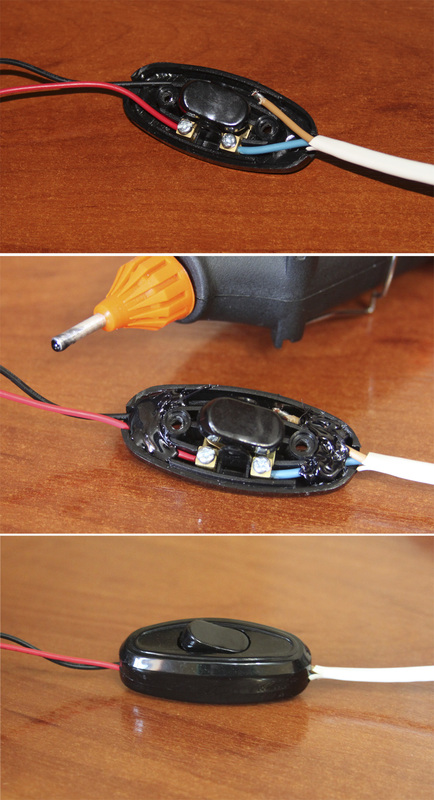
Now it remains to go with a cotton swab around the perimeter of the monitor and gently glue the LED strip.
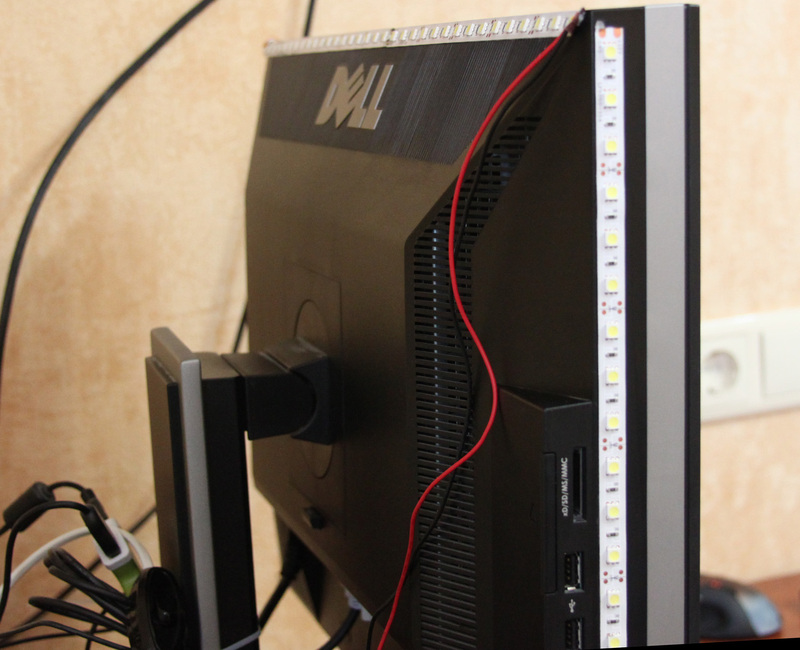
We wire to the system unit, connect to the molex and you can enjoy the result.

But after the first five minutes, it turns out the first minus - the backlight is brighter than the monitor. Attempts to make the brightness of the monitor higher did not lead to anything, for so the eyes got even more tired. But this is not a problem! We recall about such a wonderful thing as the 555 timer, we find the scheme of the PWM controller (dimmer).
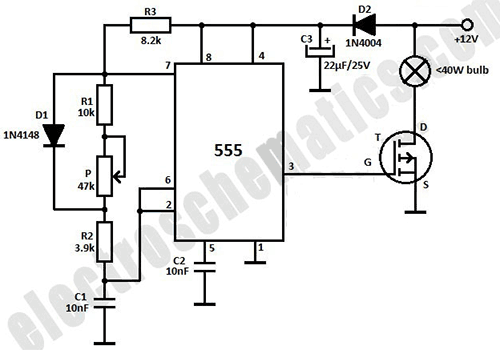
You can use BUZ20, BUZ72, 10N10 as mosfeta. I recommend to take a variable resistor more, ~ 70kΩ.
We go to the nearest radio market and buy everything we need (resistors are needed in a quantity of 1pc of each nominal, but I took 100pc smd tapes).
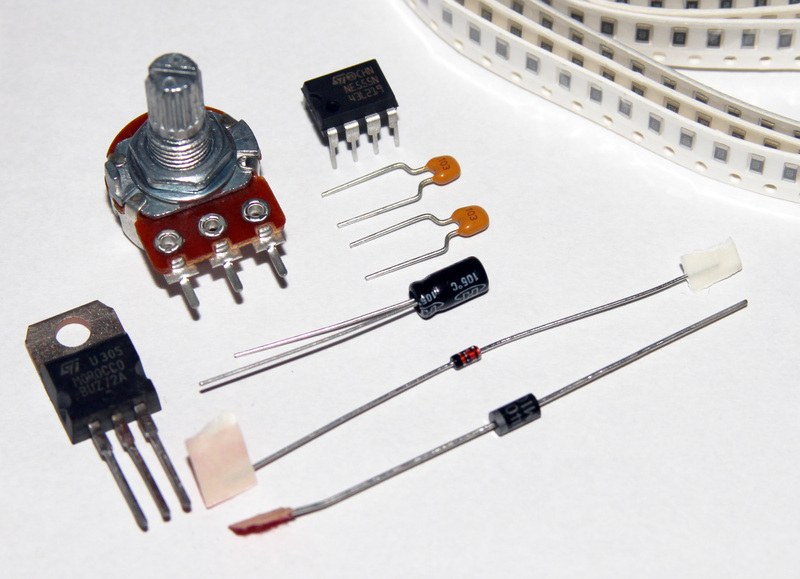
Quickly on the breadboard board we collect all this. It turns out such a small scarf:
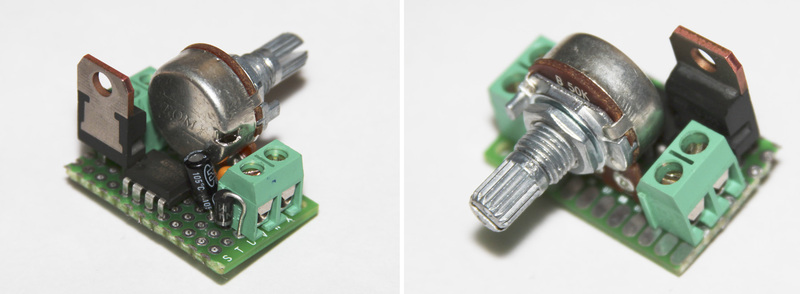
... and connect to the gap between the switch and the LED strip:

Now you can rejoice at the lack of eye fatigue during night programming sessions by adjusting (within large limits) the brightness of the backlight.
Costs are:
Total: 125 UAH (15.3 USD).
PS At the time of this writing, 2 weeks of using the backlight. The flight is normal, satisfied.
PPS I use as a NetBeans IDE, which has a default white background. People with a dark background of this problem may not arise, and this solution will probably only interfere.
PPPS My first post!
Freelance as the main type of work I have been doing for almost 7 months. For some reason (magistracy, bicycle, laziness, etc.) I often work in the evening.
But the trouble is, the lighting in the room is weak, and the brightness of the monitor in the evening just disappears. I put up with it for a long time. And then, suddenly, during the next evening watching the masterpiece of the film industry on your Philips TV, with the remarkable Ambilight technology, an idea comes to me - why not make a similar white backlight for the monitor?
')
No sooner said than done! Result of work:

Who are interested in the stages of construction - I ask for habrakat.
Immediately decided to feed it all from a computer power supply, because backlight is needed only while working on it. Soon the LED tape was ordered in the well-known Chinese online store Aliexpress. After a long 3 weeks of waiting, I have it.

I regretted that I had ordered from an unverified seller, who instead of the tape on a reel in an antistatic package packed this tape without a reel into a simple bag, and into an envelope made from a pinch. The benefit of the tape is almost not damaged (because of the bend, 1 LED has fallen off, which was successfully soldered back). The seller in the black list, definitely.
We check the performance of the tape, measure the monitor (3 times) and cut. It is necessary to cut according to such special marks.

As a result, should get this:

Next, you need to solder all four pieces into one. I soldered wires about ~ 2 cm in length, for safe bending to a 90 degree angle.
The next step is to turn on the switch (just in case, filled it with silicone glue, because the wires are thin and not fixed).

Now it remains to go with a cotton swab around the perimeter of the monitor and gently glue the LED strip.

We wire to the system unit, connect to the molex and you can enjoy the result.

But after the first five minutes, it turns out the first minus - the backlight is brighter than the monitor. Attempts to make the brightness of the monitor higher did not lead to anything, for so the eyes got even more tired. But this is not a problem! We recall about such a wonderful thing as the 555 timer, we find the scheme of the PWM controller (dimmer).

You can use BUZ20, BUZ72, 10N10 as mosfeta. I recommend to take a variable resistor more, ~ 70kΩ.
We go to the nearest radio market and buy everything we need (resistors are needed in a quantity of 1pc of each nominal, but I took 100pc smd tapes).

Quickly on the breadboard board we collect all this. It turns out such a small scarf:

... and connect to the gap between the switch and the LED strip:

Now you can rejoice at the lack of eye fatigue during night programming sessions by adjusting (within large limits) the brightness of the backlight.
Costs are:
- LED tape, 5m - 90grn (11u.e.) But only 1.8m was used (24 "monitor)
- Wire 2 x copper conductor, 0.75 cross section, 5 m - 15 UAH (1.8 cu)
- Switch - 8 UAH (1u.e.)
- Details for dimmer - 12 UAH (1.5 u. E.)
Total: 125 UAH (15.3 USD).
PS At the time of this writing, 2 weeks of using the backlight. The flight is normal, satisfied.
PPS I use as a NetBeans IDE, which has a default white background. People with a dark background of this problem may not arise, and this solution will probably only interfere.
PPPS My first post!
Source: https://habr.com/ru/post/181978/
All Articles